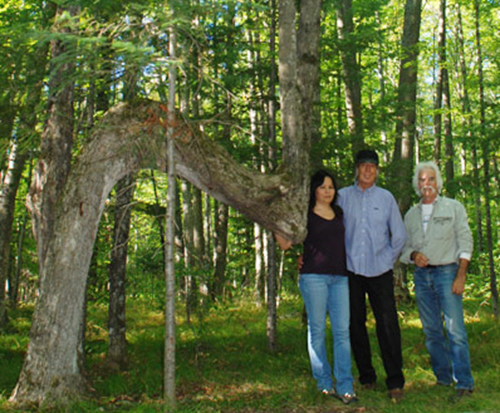If You See an Old Tree Bent Like This...



Published September 18, 2017, By NICER DAYS / NICERDAYS.ORG
If you see an old tree bent like this, start looking around, it’s pointing to something special.
If you’re ever hiking or camping in any of the countless forests throughout the United States, keep an eye out for an old bent tree like the one shown above. After spotting a tree with a sharp bend that doesn’t seem natural, take a look around. The tree may be pointing to a piece of history.
According to American Forests, some of these tress are “landmarks that helped guide indigenous people on their way.”
“Native Americans would bend young trees to create permanent trail markers, designating safe paths through rough country and pointing travelers toward water, food or other important landmarks,” explains Katrina Marland, a former managing editor with American Forests. “Over the years, the trees have grown, keeping their original shape, American Forests. “Over the years, the trees have grown, keeping their original shape, but with their purpose all but forgotten as modern life sprang up around them. Today, we may not need these ‘trail trees’ to navigate, but their place in history makes them invaluable.”
Keep in mind that not every tree bent at a funny angle will be an authentic trail tree. The dozens of authentic trail trees still in existence are usually no younger than 150-years-old. In addition to their old age, a true “trail tree” must be bent relatively close to the ground and point to a notable feature of land like a spring or a safe place to ford a river.
There are only a few hundred of these authentic trees left. Groups like the Dallas Historic Tree Coalition in Texas and the Mountain Stewards in Georgia are working to identify and authenticate as many of these trees as they can. Earl Otchingwanigan, a professor emeritus and Smithsonian consultant shows a re-creation conducted in 1933 by two local Ojibwe men.

Photo source Great Lakes Trail Marker Tree Society.
The two Ojibwe men were in their 70s at the time and well old enough to have learned the practice from the Native Americans responsible for the original markers. Otchingwanigan is a member of LAnse (Keweenaw Bay Tribe) of Lake Superior and co-founder of the Ojibwe Heritage Council of Iron County Michigan.
Steve Houser, an arborist with the Dallas Historic Tree Coalition, told Atlas Obscura that he had investigated around 450 trees over two decades. Only 155 of those trees were worth further investigation and less than a dozen of those were officially recognized as the real deal.
Many of these trees are still alive and hidden throughout the mountain trails and national parks of the United States.
